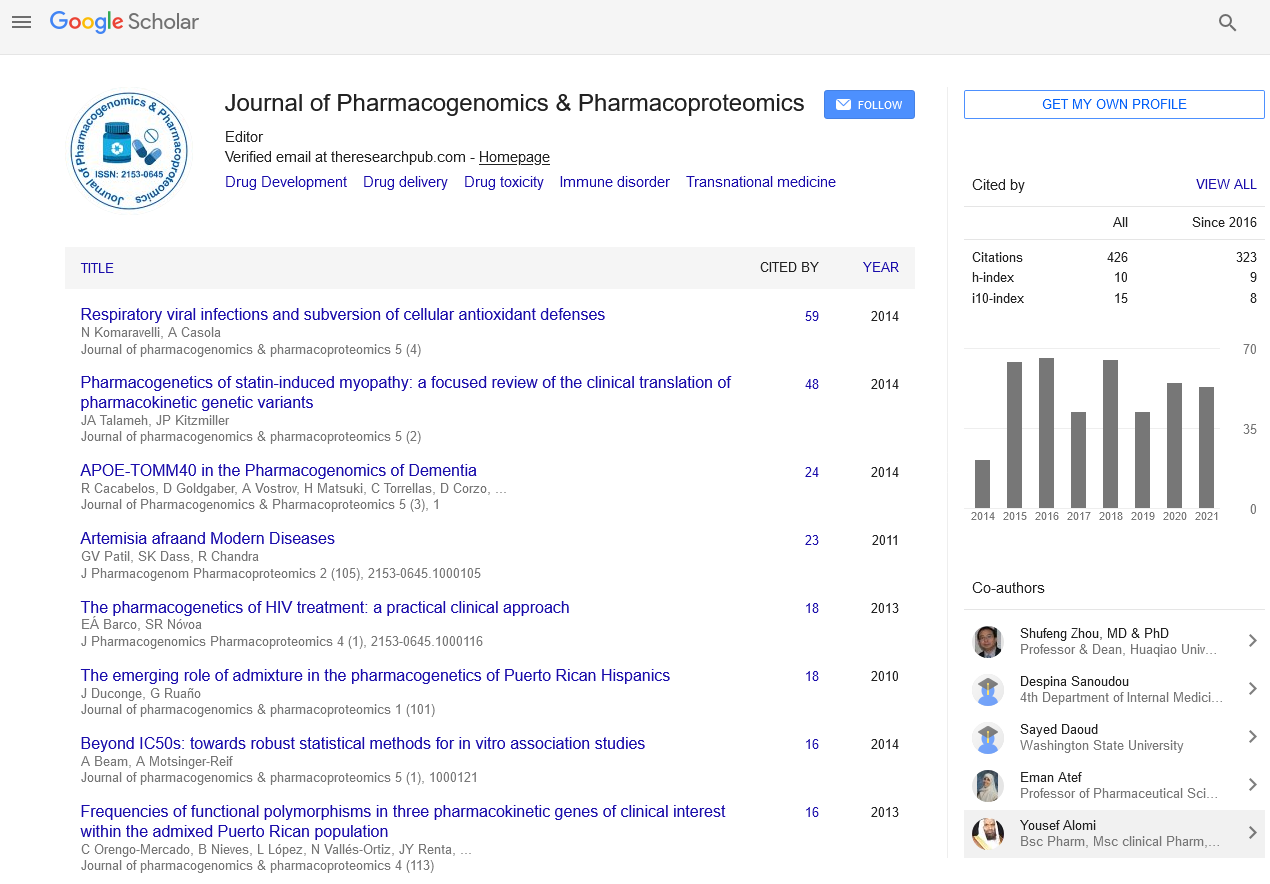Indexed In
- Open J Gate
- Genamics JournalSeek
- Academic Keys
- JournalTOCs
- ResearchBible
- Electronic Journals Library
- RefSeek
- Hamdard University
- EBSCO A-Z
- OCLC- WorldCat
- Proquest Summons
- SWB online catalog
- Virtual Library of Biology (vifabio)
- Publons
- MIAR
- Euro Pub
- Google Scholar
Useful Links
Share This Page
Journal Flyer

Open Access Journals
- Agri and Aquaculture
- Biochemistry
- Bioinformatics & Systems Biology
- Business & Management
- Chemistry
- Clinical Sciences
- Engineering
- Food & Nutrition
- General Science
- Genetics & Molecular Biology
- Immunology & Microbiology
- Medical Sciences
- Neuroscience & Psychology
- Nursing & Health Care
- Pharmaceutical Sciences
Re-validation of BCR-ABL1 quantitation method to meet the International Scale standards
2nd International Conference on Predictive, Preventive and Personalized Medicine & Molecular Diagnostics
November 03-05, 2014 Embassy Suites Las Vegas, USA
Ana Maria Fraga, Melina Gon?alves dos Santos Barth, Danyella Silva Pereira, Vanessa Dionisio Cantagalli, Miguel Mitne-Neto, Maria Carolina Tostes Pintao and Marcos Tadeu dos Santos
Posters: J Pharmacogenomics Pharmacoproteomics
Abstract:
The BCR-ABL1 fusion gene is the result of a translocation involving chromosomes 9 and 22, and is found in nearly all patients with chronic myeloid leukemia (CML). Depending on the location of the breakpoint, BCR-ABL1 can encode different proteins. The most common is p210 (with 210 kDa), an aberrant tyrosine kinase known to be critical for the disease; its activity is inhibited by imatinib, a selective targeted designed drug, the first clinically available to treat CML. Molecular monitoring during treatment is based on quantitative RT-PCR (qRT-PCR), targeting BCR-ABL1 transcripts in blood. However, variation of the procedures difficults comparison, confuses patients and physicians, and hampers therapeutic conclusions. So, efforts have been made towards standardization of methodology, with the adoption of an International Scale (IS) for reporting BCR-ABL1 results. We offer a qRT-PCR test to measure p210 transcript levels, but since 2013 we have been improving its quality to meet International Scale criteria. Changes already adopted were: (1) reinforcement of best practices for RNA handling; (2) leukocyte isolated from 10 mL of blood; (3) TRIzol? Reagent used for RNA isolation, instead of silica-based columns; (4) automated pipetting system and thermocycler for cDNA synthesis. These modifications resulted in better RNA integrity and quantity, and improved sensitivity, as detection of ABL1 transcripts copy number (used as internal control) augmented 60%. Also, preliminary data indicated that commercially available standard curves provided more consistent results. As a final point, sample exchanges with reference laboratories will generate a specific conversion factor, aligning our reports to the IS.
Biography :
Ana Maria Fraga has completed her Ph.D in Genetics from University of Sao Paulo, Brazil. She has worked as a Technical Application Scientist at Life Technologies (Thermo Fisher Scientific). She has been working at Grupo Fleury as a researcher since 2013. She has published 8 papers in reputed journals and is a reference in embryonic stem cells research in Brazil.


